MARKET OVERVIEW
The Global Smart Inhalers market under global healthcare technologies will change how respiratory conditions are managed and monitored in clinical and home settings. This market focuses on digital inhaling devices, meant not only for therapeutic medication delivery but also to collect usage data, offering reminders, and synchronizing with mobile applications and/or healthcare systems. As respiratory diseases such as asthma and chronic obstructive pulmonary disease continue to take a toll on millions across the world, the smart inhaler will offer more personalized and data-based treatment support.
Connected health innovations will amount to new prospects for the Global Smart Inhalers' market. These inhalers are coupled with sophisticated sensors and connectivity features to verify that patients comply with prescribed therapy. By means of built-in tracking systems, the inhaler will collect accurate timestamps for each dose taken, allowing better monitoring of adherence. Such data will be sent in real time to cloud platforms from which clinicians and patients will glean insights affecting clinical pathways. The market will not be solely for the delivery of medication: it will encompass analytics, modes of communications, and digital interfaces tuned to patient behavior and preferences.
The Global Smart Inhalers' regulatory landscape will be coextruded with an injection stopper of its adherents that includes pharmaceutical companies, device manufacturers, and digital health platforms. Smart inhalers will interact as both therapeutic agents and diagnostic drugs as interoperability between devices and health care ecosystem becomes a focus. Data collected by such devices would aid in longitudinal tracking of symptoms, and fine-tune titration of drug dosing or switching between drug types with far more accuracy and timely help. It will build a pathway to an engaged patient-provider relationship characterized by dynamic feedback loops and treatment transparency.
The structure of the Global Smart Inhalers market will also be determined by new regulations and evolving standards of healthcare. Admittedly, there will be a number of safety and data protection laws that such devices must comply with, especially since they go on to operate in networks handling personal medical info. Manufacturers will be focusing on the design of inhalers that clinically perform but seamlessly integrate with patient support means such as smartphone apps, telehealth services, and electronic health records. The combination of these tools gives the smart inhaler further transformation from an isolated therapeutic to integrated building blocks of the digital health infrastructure.
Another defining attribute of the Global Smart Inhalers market will be its outreach to diverse patient populations and geographical regions. While adoption may be led initially by areas with high-income because of their superior digital infrastructure, emerging markets will equally provide opportunities for high adoption as mobile technologies become more affordable.
Global Smart Inhalers market is estimated to reach $72,145.64 Million by 2032; growing at a CAGR of 19.5% from 2025 to 2032.
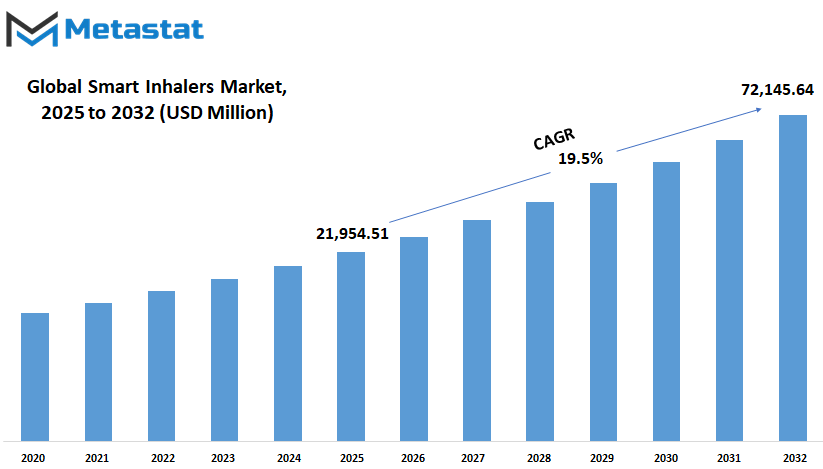
GROWTH FACTORS
The global smart inhalers market is beholding a very bright future as the demand for more advanced systems for respiratory diseases increases. The major factor for this growth in the market is the growing incidence of respiratory diseases, mainly asthma and chronic obstructive pulmonary disease (COPD). Thousands of millions suffer from these diseases around the world, and therefore the need for more effective and reliable tools becomes higher and higher. The smart inhalers that offer the functionality of a traditional inhaler, combined with modern digital technology, offer patients a promising avenue for effective management of their illness.
Another prime factor contributing to the growth of the industry is the increasing adoption of digital healthcare solutions. With the advent of technology and the incorporation of tools for better patient care, remote patient monitoring became more and more feasible. Smart inhalers can track usage-pattern tendencies, provide reminders, and even send real-time data to healthcare providers. Such devices enable better management of respiratory diseases as a physician will be able to closely monitor the progress of the patient and provide timely adjustments to the treatment plan if required. Hence the demand for smart inhalers is expected to escalate over time as these digital solutions become adopted by more healthcare systems.
Wide adoption of smart inhalers has challenges, one of them being primarily the price. These have a higher cost when compared to conventional inhalers. Although smart inhalers can offer several advantages, such as good tracking and improved personalized treatment recommendations, these price points can act as barriers for a majority of the patients, especially in poorer areas. Another obstacle may be the limited availability of advanced technology in healthcare across certain regions of the world, thereby resulting in restricted growth of the market. In some regions, the healthcare system may not yet be fully developed to support the use of these high-end devices for their availability by the public.
However, the future of the Global Smart Inhalers Market is bright. Tomorrow AI integration is said to provide lucrative opportunities. AI could analyze patient data to provide treatment recommendations personalized according to individual needs. This would enhance the efficacy of treatment while empowering the patient to manage their health better. Continuation of these interweaving technologies improves the smart inhalers of tomorrow in catering to the needs of respiratory disease management and outcome improvement on the part of the patient, with much more scope for innovations in healthcare.
MARKET SEGMENTATION
By Type
Technological development and patient-focused care are two factors shaping the future of the Global Smart Inhalers market. Increasing acceptance in the management of respiratory disorders such as asthma and COPD hinges on digital sensors and connectivity features that characterize smart inhalers. These devices not only keep a record of medication use and remind patients when to take their medication but also relay real-time information to the patients and clinicians. In this manner, they greatly enhance patient engagement and compliance and thereby improve treatment outcomes. Looking ahead, this market will continue to grow as digital health solutions are further incorporated into healthcare.
One of the key developments in the Global Smart Inhalers market is the segmentation by type. There are 2 main groups: Dry Powdered Inhalers (DPIs) and Metered Dose Inhalers (MDIs). Both of these groups have features that differentiate them based on the needs of distinct patients. DPIs offer better convenience due to their ease of operation, and users are not required to coordinate inhalation with actuation. On the contrary, MDIs, which have been more commonly used, require proper timing of both inhalation and release of the medication. Both technologies will continuously see improvements to enhance their effectiveness and user-friendliness.
The next few years will experience a boom in this market segment, with the device market value expected to reach USD 8,662.18 million for DPIs and USD 13,292.33 million for MDIs by 2025. The driving forces include the increasing incidence of diseases in the respiratory system, higher adoption rate of home healthcare solutions, and improvements in mobile health applications. The demand for smart inhalers will remain upward with greater emphasis on smarter healthcare capabilities.
Assuming continued progress in digital health, these future smart inhalers may possibly contain even more advanced features such as enhanced data tracking and better interconnectivity with other medical devices to facilitate personalized treatment per individual patient needs. More intelligent technology combined with better data collection will significantly improve the management of respiratory diseases with better patient outcomes.
To summarize, the Global Smart Inhalers market indicates sustainability and growth in the near future. With recent improvements in DPIs and MDIs, respiratory care is becoming brighter for the future since these devices are turning smarter to further enable effective disease management and better health care globally for all the patients.
By Indication
Advancements in technology and the increasing need for better management of respiratory conditions will propel significant growth for the Global Smart Inhalers market in the coming years. In this accelerated digital transformation of the healthcare industry, the role of smart inhalers in improving patient outcomes and delivering treatment efficiencies will be paramount. The design of the market is influenced by the way these devices tackle different respiratory conditions, especially with regard to asthma, chronic obstructive pulmonary disease (COPD), and their associated disorders.
Smart inhalers are increasingly seeing a rising need in the market due to asthma being a chronic disease affecting millions. With such devices, patients come to a position where they can monitor their inhaler use, track symptoms, and receive reminders about taking their medications. As awareness concerning asthma management increases alongside the number of patients seeking personalized care, smart inhalers belonging to this category will only remain in demand. Provided that smart technology can track asthma symptoms, it provides patients with the means to know what triggers them to offset those triggers through behavioral accommodation, resulting in better control over their disease with fewer emergent interventions.
Yet another significant factor for growth will be COPD, another chronic lung condition, which is expected to drive Global Smart Inhalers. With an aging population on one hand and a steadily increasing number of patients diagnosed with COPD with the associated need for efficient solutions to manage this crippling condition on the other, COPD continues by smart inhalers in providing medication reminders, adherence tracking, and data-sharing capacity with available providers to monitor their respective patients remotely. In this way, it establishes a wider framework of treatment that allows for earlier intervention, reducing hospital visits, and bettering the quality of life for patients.
Other indications in the market will likewise prescribe growth to smart inhalers. Other indications may include cystic fibrosis, bronchitis, and certain allergic responses. Such devices can be adjusted to patients' various needs, thus revolutionizing the whole process of treatment with particular reference to different respiratory conditions. With the growing trend of patient preference for enhanced convenience and efficacy in the health gadgetry they use, the growth of indications for smart inhalers will be a factor that in tandem will help in the imparting of an increased acceptability of such technologies into healthcare practice.
In the years to come, the Global Smart Inhalers Market is being ushered toward a more personal being, being truly data-driven in its approaches when it comes to respiratory care. These devices keep improving, providing not just medication delivery but also real-time insights that allow patients and healthcare providers alike to make better and more informed decisions. Smart inhalers have a promising future where technology will play an increasingly critical role in bettering the management of asthma, COPD, and other respiratory diseases.
By Distribution Channel
The Smart Inhalers market across the globe is anticipated to undergo drastic changes on the future. The changes will impact technological improvements, healthcare awareness, and the necessity of more efficient modes of management of respiratory disorders. An inevitable aspect of the increasing popularity of smart inhalers, the distribution channels through which these devices will be sold will also have a significant role in shaping how the market will grow and adapt to future needs. This is because, as much as there are different types of distribution channels available, each one has unique advantages that will continue influencing consumer access to these devices.
Hospital pharmacies would still serve as a very important pipeline in the distribution of smart inhalers. In future, there is an expectation that most hospitals will continue to remain as the first lines of care for patients suffering from respiratory diseases. These smart inhalers that would be able to monitor each usage and provide real-time data are increasingly going to form an integral part of the patient care plan, especially for patients suffering from chronic conditions like asthma or chronic obstructive pulmonary disease (COPD). With hospitals likely to utilize advanced technologies in health care for better patient outcomes, the demand for using smart inhalers in these settings will increase. Incorporation and evidence-based use will be sustained by hospital pharmacy interventions with tailored clinical support.
Retail pharmacies will see constant demand for smart inhalers as they become increasingly aware of the devices and their use. In addition, with self-care gaining prominence and being embraced by many, retail pharmacies will form major frontiers from where people will buy their smart inhalers because of the convenience with which such devices can be purchased from over-the-counter sources and coupled with advice from pharmacists. This will happen in the future. Many partnerships will emerge between pharmaceutical companies with retail chains and hence smart inhalers will soon be in shops nearer to the consumers or even at a potentially lower cost.
The online pharmacies will soon be the biggest player in the delivery of smart inhalers. Most people believe that e-commerce can do anything, including servicing health needs. The more online convenience available in the purchase of a model device, often involving home delivery of a consumer's purchase, the better. As the digital health landscape continues to expand, the online pharmacy sector will likely see improvements in how smart inhalers are marketed and distributed, making them more accessible to a global audience. This investigating into online purchasing will also continually improve competition, good price competitiveness, and device variety.
By End-use
It is very optimistic that in the future, the Global Smart Inhalers market will continue to flourish as technology improves respiratory conditions and how it is managed. As more and more individuals are diagnosed with asthmatic, chronic obstructive pulmonary disease (COPD), and similar other conditions, there is going to be a rising demand for smart inhalers-the combination of inhalation technology and smart features, allowing for real-time monitoring and better management of conditions. This will include all end-use sectors, which tell more about future market expansions.
Hospital-based, indoor settings are expected to be popular environments for the adoption of smart inhalers, as healthcare systems continue paying more attention to find ways for making possible improvements in patient outcomes. Adoption will occur for reporting medication usage and temporal status tracking capabilities for both patients and healthcare providers for personalized treatment interventions. Furthermore, smart inhalers will provide hospitals with benefits through enhancing efficacy with which medication would be given and allow for monitoring better an adherence to the regimen prescribed. Hence, the possibilities of patient remote monitoring will be availed in critical care environments.
Smart inhalers are heading toward many homes. In this regard, as healthcare reform becomes more patient-centered and more home-based, persons with respiratory diseases will tend to use these instruments for the management of symptoms away from medical centers. Illnesses will therefore use smart inhalers more since they are assumed to be user-friendly for patients at home, thus increasing the utilization of prescribed medications reducing the number of altogether hospital visiting days but improving days of good quality living. This might as well increase the ability to record medicine-taking behavior through mobile apps or online platforms for further and easier maintenance of chronic conditions in the long run.
The contribution of the "Others" category, such as pharmacies and outpatient care facilities, will certainly enhance the growth of the emerging market. Smart inhalers will be increasingly accessible in those locations, and patients will be able to use them on-the-spot, be it for a check-up or a small treatment course. These devices will help patients know their condition and will also provide healthcare professionals with vital information related to the efficacy of treatment.
Although the Global Smart Inhalers market is expected to grow continually, it is evident that such devices will be very important concerning improving respiratory care for patients requiring both home and hospital management of diseases. Our health systems will enter an era of smart technology with healthcare to achieve better outcomes for individuals with chronic respiratory diseases. This will be beneficial to both the patient and the healthcare provider.
|
Forecast Period |
2025-2032 |
|
Market Size in 2025 |
$21,954.51 million |
|
Market Size by 2032 |
$72,145.64 Million |
|
Growth Rate from 2025 to 2032 |
19.5% |
|
Base Year |
2024 |
|
Regions Covered |
North America, Europe, Asia-Pacific, South America, Middle East & Africa |
REGIONAL ANALYSIS
The Global Smart Inhalers market is set for rapid growth in the next few years with the rising demand for personalization and efficacy in treatment for respiratory diseases. Responsible for just altering the way patients manage conditions such as asthma and COPD, these devices are here to stay. The future course of the market, however, will be largely influenced by its geographical distribution.
As awareness among the population regarding respiratory diseases grows and healthcare technology progresses further, the North American market of smart inhalers will witness growth. The U.S., followed by Canada, and Mexico, will lead the adoption of these devices, and the U.S. will see acute integration of smart inhalers in market dynamics catering to urban and rural populations. For both patients and healthcare professionals, these devices are remarkably appealing since they track medication usage, symptom monitoring, and communication features with health care providers. As awareness about chronic respiratory conditions increases among patients in North America, smart inhalers will enjoy widespread use, setting a momentum for other regions to follow.
Europe, with a notable and strong healthcare system that is technologically developed, will witness rapid growth. The United Kingdom, Germany, France, and Italy are among the key markets that are expected to embrace smart inhalers increasingly. The region has strong regulatory frameworks that cover the safety and efficacy requirements of these devices, furthering the developments of the market. With European countries focusing on superior management solutions for the healthcare sector, smart inhalers will be a healthcare solution to improve the patient's quality of life with respiratory illnesses.
In the future, Asia-Pacific is set to become a market heavyweight in smart inhalers. Demand for these devices will be generated by an increase in populations and the incidence of respiratory diseases in countries like India, China, Japan, and South Korea. In China and India, demand will spike sharply for smart inhalers as well as for other inexpensive and relevant healthcare solutions. Progress in smart inhaler adoption will be witnessed in these countries with the proliferation of improved healthcare access and technological advancements. In Japan and South Korea, with the technology development being mainly industry-directed, the two countries are expected to be frontrunners in the design and launching of newer versions of these devices.
In South America, Brazil and Argentina are the lead players in this emerging smart inhaler market. With a focus on improving their healthcare systems, these countries will also correspondingly increase their fight for affordable treatment for respiratory diseases, further increasing supplies for smart inhalers. On the other hand, Middle East & Africa will show gradual growth.
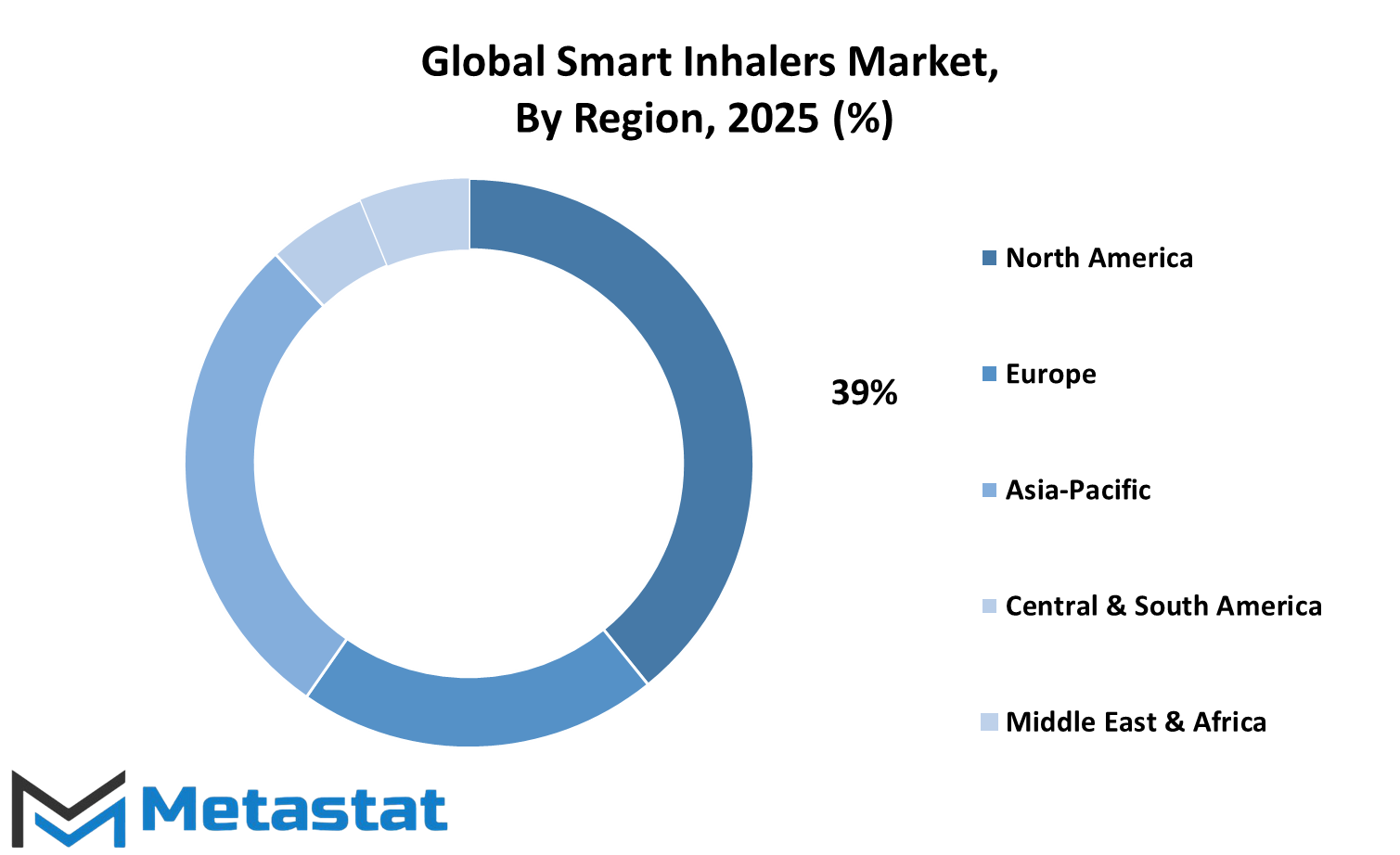
COMPETITIVE PLAYERS
The future of the Global Smart Inhalers market is bright as the world sees a lot of transformation in the coming years. Such phenomena would be catalyzed by technological advances and a greater level of consciousness toward chronic respiratory diseases such as asthma and COPD. The demand for politically correct solutions is projected to rise, specifically for these solutions that would facilitate medication delivery and real-world data collection because they have improved management of such diseases. Key players in such areas keep looking to improve and refine smart inhaler technologies. Tight competition within this industry will continue, as companies are innovating ceaselessly to keep pace with and meet the changing needs of all patients and healthcare providers.
Aptar Group Inc. (Cohero Health Inc.) is one of the leading companies of the Global Smart Inhalers market; this company has been working on developing connected devices that help people in tracking and managing their inhaler usage. Smart inhalers by Aptar can be connected to mobile apps for improved patient engagement and adherence to prescribed treatments. Following suit is Adherium Limited, which has pioneered in the design of smart inhalers that monitor patient behavior as well as offer reminders to increase medication compliance. The focus of these two companies is mostly on combining their products with digital solutions to achieve better health outcomes.
Yet another leading company in the smart inhalers market is Teva Pharmaceutical Industries Ltd.; the inhaler integrated with digital tools is what this company offers. Most importantly, Teva's smart inhalers come packed with sensors, allowing them to identify using patterns of the individual and provide patient and health provider's usage feedback. Hence this would enable a more personalized treatment plan possible for better respiratory conditions management. The company Resmed Inc. (Propeller Health) also covers this area by combining sensor technology with cloud-based platforms for patient adherence monitoring and actionable insights for physicians.
GlaxoSmithKline plc, Novartis International AG, and 3M Company are among the other big names investing in boosting their smart inhaler portfolios, considering the need for these devices in the healthcare space. Established as these companies are worldwide, their investment is also on resources to move the development of smart inhalers that, besides delivering, are also able to track and remind patients about their medication, thus improving the overall experience of mostly the patients.
With increased market growth, new companies such as Sensirion AG, Lupin Limited, and Amiko Digital Health Limited are also emerging with innovative offerings in the segment under consideration. These players will aim at devices capable of collecting real-time data and sharing it without any problem with the health care provider to improve a patient's care in the end. As competition grows, so will the emergence of new technologies that will take patient outcomes even further and revolutionize the management of chronic respiratory conditions.
Smart Inhalers Market Key Segments:
By Type
- Dry Powdered Inhalers (DPIs)
- Metered Dose Inhalers (MDIs)
By Indication
- Asthma
- Chronic Obstructive Pulmonary Disease (COPD)
- Other
By Distribution Channel
- Hospital Pharmacies
- Retail Pharmacies
- Online Pharmacies
By End-use
- Hospitals
- Homecare Settings
- Others
Key Global Smart Inhalers Industry Players
- Aptar Group Inc. (Cohero Health Inc.)
- Adherium Limited
- Cognita Labs, LLC
- Teva Pharmaceutical Industries Ltd.
- Resmed Inc. (Propeller Health)
- GlaxoSmithKline plc
- Novartis International AG
- Opko Health, Inc.
- Smart Respiratory Products Ltd.
- Sensirion AG
- Lupin Limited
- Amiko Digital Health Limited
- 3M Company
- AptarGroup, Inc.
WHAT REPORT PROVIDES
- Full in-depth analysis of the parent Industry
- Important changes in market and its dynamics
- Segmentation details of the market
- Former, on-going, and projected market analysis in terms of volume and value
- Assessment of niche industry developments
- Market share analysis
- Key strategies of major players
- Emerging segments and regional growth potential



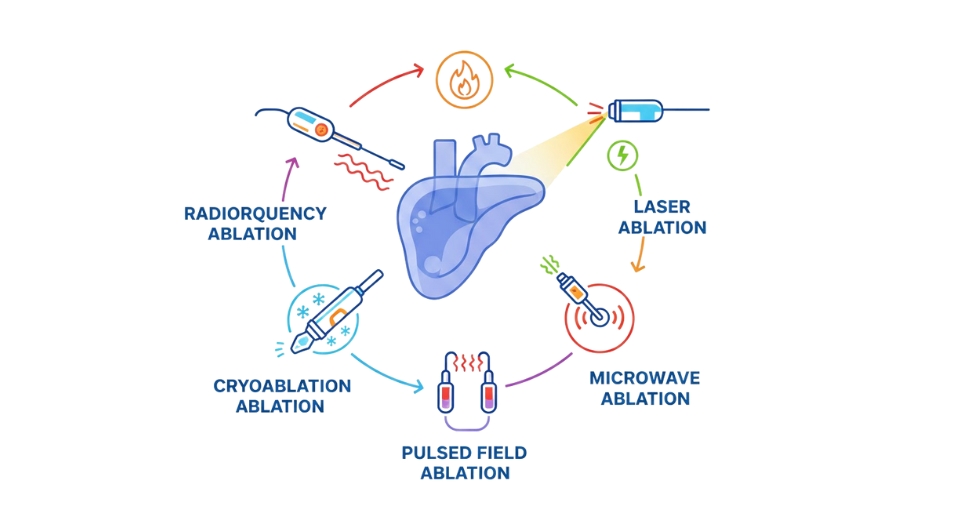

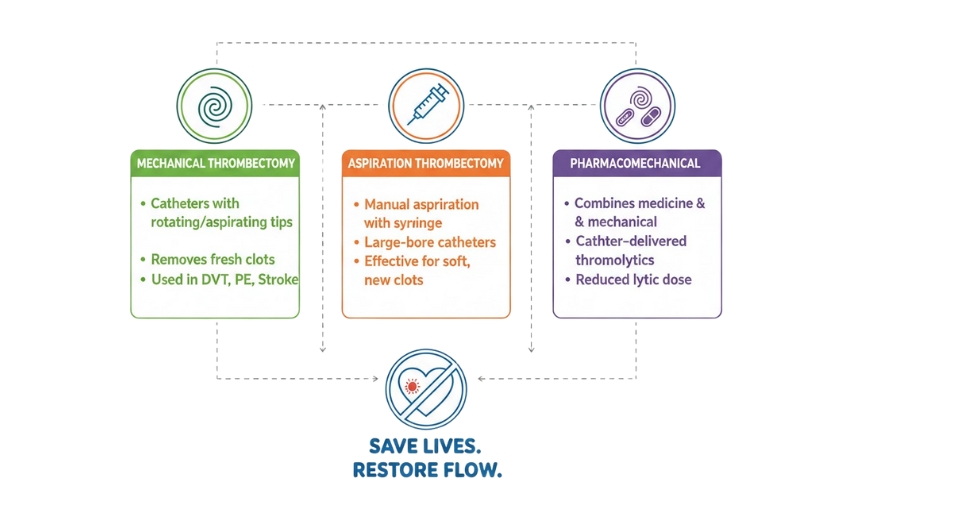
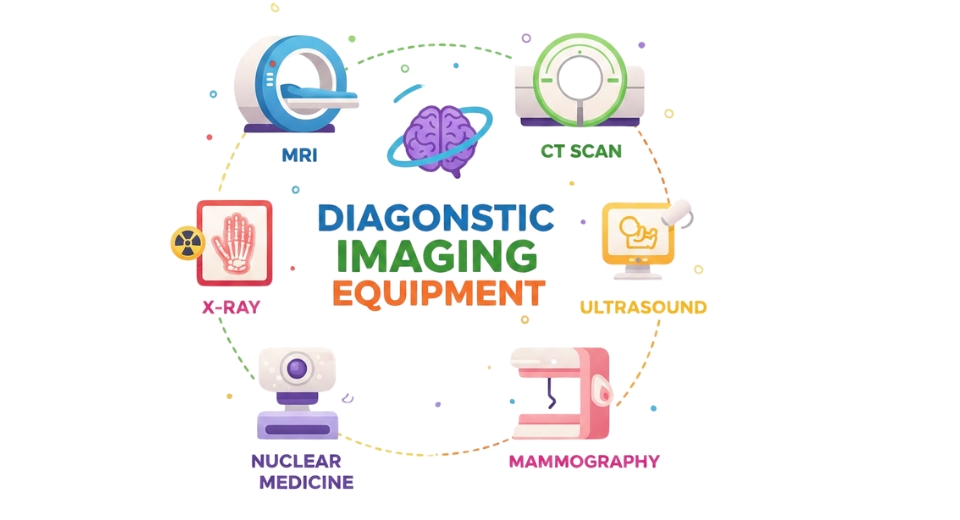

 US: +1 3023308252
US: +1 3023308252






